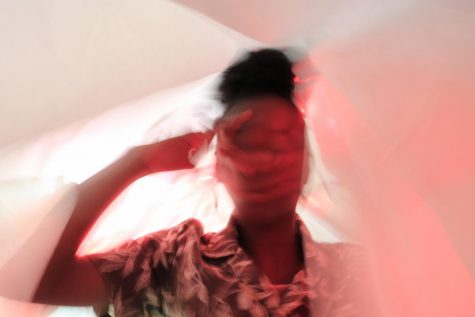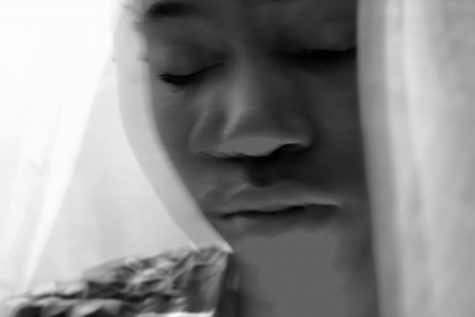What it’s like to be me: A Student with Depression
February 27, 2019

While Eleanor Roosevelt is filled with many bright individuals, some have more hidden behind their cheerful exterior. Within this school, there are students who suffer from mental illnesses – one of them being depression (fig. 1).
Depression is a complex disorder that differentiates from person to person. According to the Mayo Clinic’s description, “Depression is a mood disorder that causes a persistent feeling of sadness and loss of interest. It affects how you feel, think and behave and can lead to a variety of emotional and physical problems.”
Eleanor Roosevelt’s Senior, Keny Cordero is one of the many students that are diagnosed with depression. She became aware of what she had been suffering through her own research. She was suffering from depression for four years, but was not diagnosed until her sophomore year of high school.
Cordero stated that she “…was alone and…saw a list of symptoms of depression” and realized she had most of them. Some of her symptoms included her experiencing “persistent feelings of sadness and suicidal thoughts (fig.2).”

With this new discovery about herself, Cordero decided to seek help within school before she revealed it elsewhere. She expressed the support she received when she met with her “…guidance counselor to ask for help.” From this, she was able to gain the confidence to tell her parents about what was happening. Cordero was fortunate enough to have her parents react positively to the news(fig. 3). “They were very surprised and supportive enough to take me to therapy…” Cordero said.

Although she has this support system to rely on, Cordero does have hard days, especially during school. She states that “There aren’t really any specific thoughts that go through my head at school… I try not to let it affect me.” However, just as many others who experience depression, some days can tend to feel too much. “Sometimes I become overwhelmed and can’t function properly.” She noted that she experiences “…a big wave of sadness and anxiety…”, as well as physical effects such as “…nausea and headache (Fig. 5).” Cordero also shared that in drastic situations, she would “either skip class until I feel better or sometimes go to the guidance office,” where she would take time to herself to cope and get through a difficult state.

The effects of her depression also stem from her studies at home. Cordero shared how depression has affected her “ability to concentrate” and caused an overall decrease in motivation in her daily life. “I often feel very fatigued throughout the day and will go home and go straight to sleep,” she said (Fig 6).

This unmotivated look on life not only can affect a student’s performance in school, but vice versa. School can affect one’s mental state as well. Cordero shared that school factors including “…the workload and worries about doing well in the future” have had a negative impact upon her mental health.
With this, it is important to find healthy ways to cope through the effects and symptoms of depression. There are ways in which one could be doing more harm to themselves than good, while finding these ways to cope. A few of these harmful and unhealthy methods are self harm, overeating and compulsive shopping. Cordero, however, copes with the effects of her depression “by regularly going to therapy and taking antidepressants,” and also “breathing deeply or listening to music” to calm her down when experiencing anxiety. She also likes to be surrounded by her friends. She even has the support of some teachers to help her get through these days by allowing her “to sit in their room and cry” when she’s “having a particularly hard day.”
Another healthy way to cope is to avoid the factors that cause such stress. Many students accomplish this by taking a mental health day (Fig.7) from school. But with taking a day off not seen as being an acceptable excuse for an absence, the pressure of attending school increases their stress and puts them at risk of falling deeper into an unhealthy mental state.

Cordero shared her views on this, stating that she believes “the school should allow mental health as an excuse for absence because there are some days” where she gets “so overwhelmed and come to school and basically cry all day.” She thinks “ it’s very unproductive” and that it “makes more sense to let students take time to get their mental health together so they can be at their most productive state rather than force them to come school.” With this, Cordero continued to state “I think our school takes mental health seriously to a certain extent. They certainly are making an effort by supporting Bring Change to Roose’s (Roosevelt mental health club) efforts to bring awareness to the school and listen to what we have to say.”



